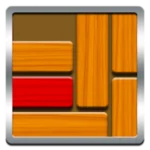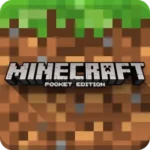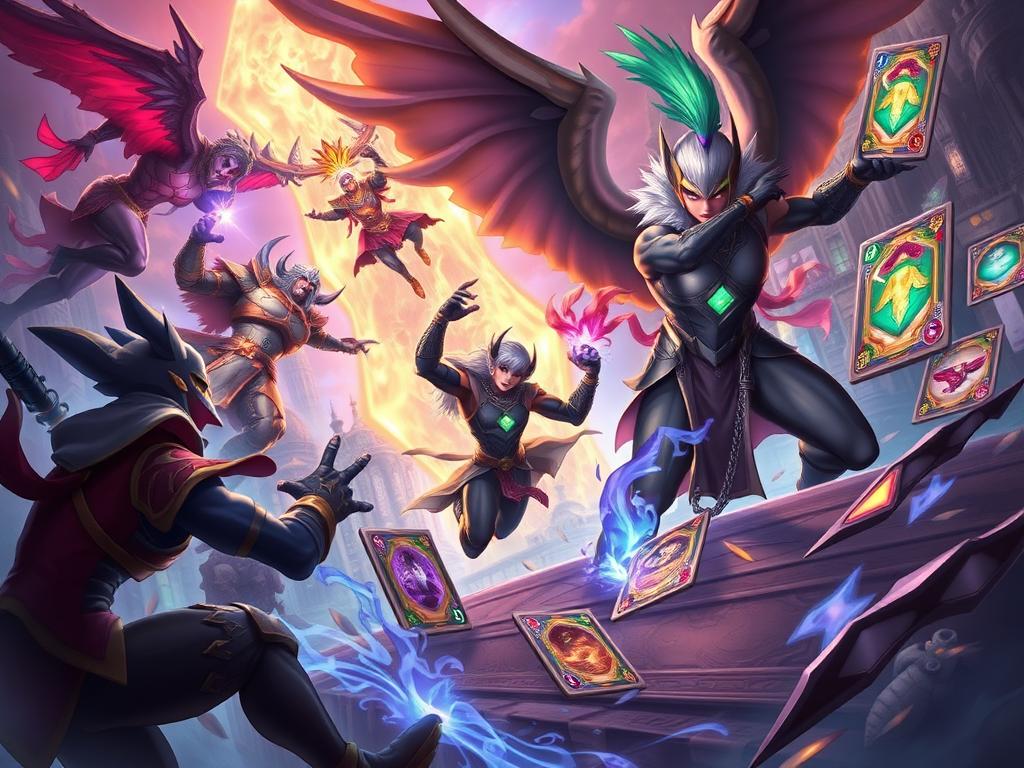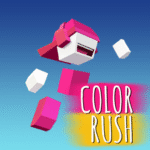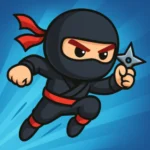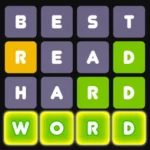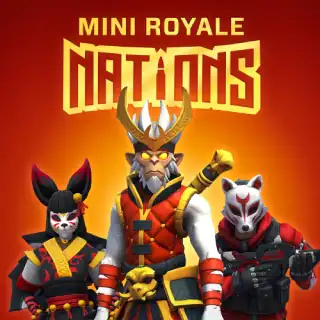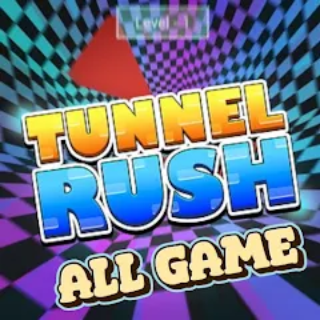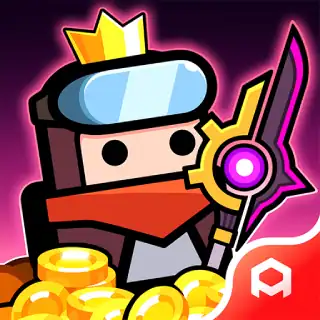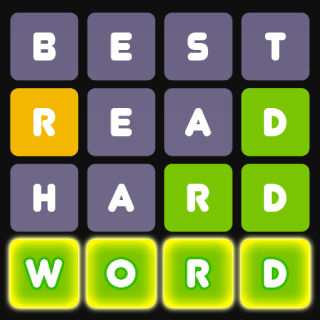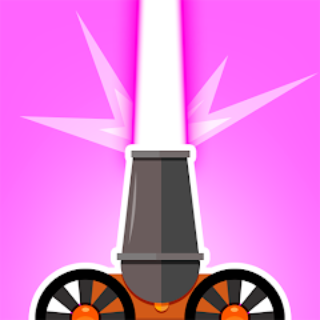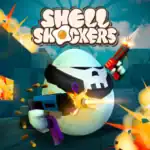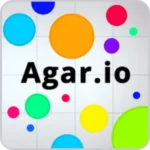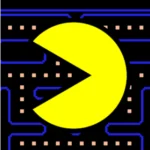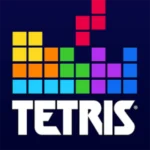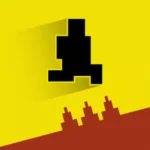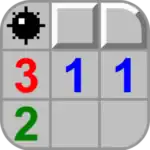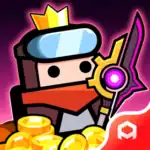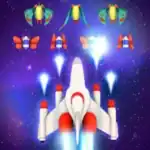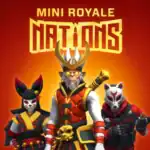Mastering Browser Trading Card Games: Collect, Battle & Dominate
The digital frontier of gaming has opened vast new arenas for strategy, collection, and intense competition. Among the most captivating are browser trading card games, a genre that combines the intellectual depth of traditional TCGs with the unparalleled accessibility of web-based platforms. No longer are players tethered to downloads or bulky installations; instead, a world of intricate deck-building, tactical online card battles, and vibrant communities is just a browser tab away. These no download TCG experiences offer a unique blend of strategic challenge and the thrill of collecting rare digital assets, making them a perfect fit for anyone seeking engaging gameplay without commitment to software installations. As we delve into 2025, the landscape of free TCG online options is richer and more diverse than ever, promising endless hours of strategic mastery and competitive glory for players eager to collect and battle their way to the top.
The Enduring Appeal of Browser-Based TCGs
The allure of browser card games, particularly those in the trading card genre, lies primarily in their accessibility. The “no download” aspect is a game-changer, eliminating barriers that often deter new players. Anyone with a modern web browser and an internet connection can instantly dive into complex strategic ecosystems, making play TCG online free a reality for millions. This ease of access significantly broadens the player base, fostering dynamic and competitive environments where skill and strategic thinking are paramount. Furthermore, the cross-platform nature of browser games means you can seamlessly transition your gaming experience from a desktop PC to a tablet, offering flexibility that traditional client-based games often lack. The evolution of web technologies has transformed these games from simple Flash-based curiosities into graphically rich, feature-packed digital worlds, truly showcasing how browser games have evolved over the years. This genre uniquely blends the joy of collecting unique cards and building formidable decks with the thrill of head-to-head combat, making collectible card games browser experiences an incredibly sticky and rewarding pastime.
Core Mechanics and Archetypes in Strategic Card Browser Games
At the heart of every compelling strategic card browser game lies a robust set of core mechanics that dictate how players interact with their cards, resources, and opponents. Understanding these fundamentals is crucial for success. Most online TCGs revolve around managing a hand of cards, deploying units or spells, and utilizing a resource system (often mana, energy, or action points) that regenerates or accumulates each turn. The “mana curve” of your deck, which refers to the distribution of card costs, is a critical strategic consideration, influencing the pace and power of your plays throughout a match. Beyond individual card interactions, the concept of deck archetypes is foundational. Aggro decks aim for quick victories by overwhelming opponents with early pressure. Control decks focus on disrupting the opponent’s strategy, surviving early aggression, and winning in the late game with powerful finishers. Combo decks seek to assemble specific card combinations to unleash devastating, often game-ending, plays. Midrange decks aim to balance early presence with strong late-game threats, adapting to the flow of the game. Mastering these archetypes and understanding how to identify and counter them in a live online card battles scenario is a cornerstone of competitive play, directly impacting your ability to dominate.
Deck Building Fundamentals for Domination
The true mastery of browser trading card games begins long before the first card is played: it starts with meticulous deck building. A well-constructed deck is the blueprint for victory, designed to execute a coherent strategy. First, identify your win condition – how do you plan to defeat your opponent? Is it through aggressive early damage, overwhelming value, or a game-ending combo? Once your win condition is clear, every card choice should support that goal. Consider card synergy, where cards enhance each other’s effects, creating powerful interactions that are greater than the sum of their parts. Consistency is key; including multiple copies of essential cards increases the likelihood of drawing them when needed. However, balance consistency with versatility; you’ll need answers for various threats your opponent might present. The “mana curve” is paramount: ensure a healthy distribution of low-cost cards for early plays, mid-cost cards for impactful turns, and high-cost cards as finishers. Don’t overload your deck with expensive cards unless your strategy explicitly allows for it. For competitive card battle 2025 play, understanding sideboarding (if the game supports it) is crucial. Sideboarding involves adjusting a small number of cards in your deck between games in a match to counter specific opponent strategies. This adaptability is a hallmark of truly dominant players. Remember, deck building is an iterative process; test, analyze, and refine your creations continuously. Learn more about general strategic approaches to browser games here.
Best Browser TCGs: Deep Dives into 3 Pillars
Urban Rivals: The OG Browser TCG with a Punch
Urban Rivals stands as a testament to the longevity and addictive nature of browser trading card games. Launched in 2006, this game has maintained a dedicated player base for over a decade, proving that simple yet deep mechanics can endure. It features a unique combat system where players choose a certain number of pillz (resources) to boost their card’s power, creating a bluffing and resource management mini-game within each round. The goal is to reduce your opponent’s life total to zero by winning rounds. Each card belongs to a “clan,” and activating bonus effects often requires playing multiple cards from the same clan. This makes deck building a balance between raw power, clan synergy, and strategic pillz management. Urban Rivals is a quintessential no download TCG, offering instant access to its vibrant, character-rich world.
Sample Deck Build: All Stars (Aggro/Pillz Manipulation)
The All Stars clan focuses on reducing the opponent’s pillz or healing your own, disrupting their strategy while maintaining offensive pressure. A typical 8-card ELO deck (a popular competitive format) would include high-impact cards with pillz-manipulation abilities. For instance:
- Marina (Power reduction/Pillz manipulation)
- General Krash (High power/Damage)
- Ambre (Pillz manipulation/Utility)
- Ashigaru (Pillz manipulation/Damage)
- Kinjo (Power reduction)
- Fuzz (Damage/Ability)
- Nelly (Pillz gain/Utility)
- Chloe (Pillz reduction/Damage)
Tournament Strategy for Urban Rivals
Mastering Urban Rivals in a competitive setting, particularly for card battle 2025, hinges on unpredictable pillz management and understanding your opponent’s likely moves. With this All Stars deck, your strategy is to bluff effectively. Use low pillz on strong cards early to force out opponent’s pillz, then unleash high pillz on cards like General Krash for decisive blows. Marina and Kinjo are excellent for frustrating opponents by reducing their card’s power, forcing them to overspend pillz. Ambre and Nelly provide critical pillz regeneration or disruption. Knowing when to use your GHEIST (damage reduction) and Leaders (global buffs) is also key. The game rewards deep meta-knowledge and a keen sense of psychological warfare. This focus on individual card battles makes it one of the most engaging online card battles available.
Kards: The WWII TCG Powerhouse
Kards is a unique entry among strategic card browser games, blending classic TCG mechanics with a World War II theme. Players choose a main nation (e.g., USA, Germany, USSR, Japan, Britain, France) and can ally with one support nation, building decks that combine historically inspired units, orders, and countermeasures. The gameplay features a front line system, where units must cross to attack the enemy’s headquarters directly, adding a tactical board element not often seen in online TCGs. Resources (Kredits) are generated each turn, and deploying units requires careful positioning. The “No Download” experience is fantastic through its web client, making it easily accessible for anyone looking to play TCG online free with a historical twist.
Sample Deck Build: British Air Control (Control/Aggro)
This deck leverages Britain’s strong air units and draw power, often supported by a nation like USA for ramp or direct damage. The goal is to establish air superiority, control the board with efficient units, and eventually bomb the enemy HQ.
- HQ: Britain (Main)
- Support: USA
- Air Units: Spitfire Mk V, P-40 Kittyhawk, P-51 Mustang
- Ground Units: 15th Motor Rifles, 2nd Engineers
- Orders: Naval Bombardment, Supplies, For the King
- Countermeasures: Awoken Giant, Ambush
Tournament Strategy for Kards
In Kards tournaments, understanding the meta and adapting your nation choice and deck composition is paramount. With British Air Control, the early game focuses on deploying defensive ground units to secure your front line while building Kredits for your air force. P-40 Kittyhawks provide early air presence, while Spitfire Mk V and P-51 Mustangs are your mid-to-late game powerhouses. Use Naval Bombardment to clear dangerous enemy units or directly damage their HQ. Supplies ensures card advantage, and For the King provides critical buffs. Awoken Giant and Ambush are used reactively to protect your key units or surprise opponents. Effective resource management and knowing when to push for HQ damage versus board control are the keys to victory in this card battle 2025 environment.
Gods Unchained: Web3’s Entry into Browser TCGs
Gods Unchained represents the cutting edge of collectible card games browser experiences, built on blockchain technology. As a Web3 native game, it truly embodies the “play-to-earn” ethos, where cards are actual NFTs owned by players, making it a genuine TCG collect and battle platform with real-world implications for ownership and trading. The core gameplay is reminiscent of classic TCGs, with mana, attacking units, and spells, but adds a unique “God Power” system that allows players to select a persistent ability for their chosen God (hero). This adds a layer of strategic depth, as God Powers can significantly shape a deck’s strategy. It’s an accessible free TCG online that demonstrates the future of digital asset ownership in gaming.
Sample Deck Build: Deception Aggro/Control (Aggro-Control)
This Deception deck aims to disrupt opponent’s hand and board while maintaining a steady flow of damage. It balances aggressive creatures with powerful removal and hand disruption spells.
- God: Thariel (Deception) – God Power: “Confine” or “Hide”
- Creatures: Shadow of Lethenon, Guild Enforcer, Witherfingers, Bound by Her Will, Jinxblade Duelist, Patient Pickpocket, Pyrrhic Incendiary
- Spells/Relics: Backstab, Blade of Whiteplain, Shackles, Stolen Plans, Cutthroat Insight
Tournament Strategy for Gods Unchained
In competitive Gods Unchained, especially in browser trading card games circuits, Deception Aggro/Control relies on out-tempoing your opponent and denying their resources. Early game involves playing efficient creatures like Jinxblade Duelist to establish board presence. Mid-game, cards like Guild Enforcer and Witherfingers apply pressure while providing utility. Stolen Plans and Cutthroat Insight are crucial for hand disruption, peeking at and often removing key threats from your opponent’s hand before they can be played. Backstab and Blade of Whiteplain provide efficient removal. The chosen God Power, “Confine,” can lock down dangerous enemy creatures, or “Hide,” can protect your aggressive units. The deck demands precise sequencing and knowledge of the meta to know which cards to disrupt and which threats to prioritize removing in online card battles.
Exploring 3 More Collectible Card Games Browser Gems
Skyweaver: Simplified Elegance in Web3 TCGs
Skyweaver offers a refined, accessible take on the blockchain browser card games space, designed for both TCG veterans and newcomers. Its unique resource system (“prisms”) simplifies mana curves, making the game easier to learn while retaining deep strategic possibilities. Cards gain abilities based on the prisms you have (Strength, Agility, Intellect, Wisdom, Heart), encouraging multi-prism deck building. Skyweaver prides itself on balanced gameplay and a vibrant economy where every base card can be earned through play, truly exemplifying a free TCG online model with optional NFT ownership. It’s a prime example of a modern, no download TCG built with community and fair play at its core, allowing players to play TCG online free without initial investment.
Sample Deck Build: Agility/Heart Tempo (Midrange/Tempo)
This deck focuses on playing efficient, impactful units that control the board, trade favorably, and pressure the opponent’s hero. Agility provides quick attacks and removal, while Heart offers healing, buffs, and resilient units.
- Prisms: Agility, Heart
- Units: Lightforged Blade, Shadow Stalker, Starfall Dragon, Blazeball Fanatic, Windcaller, Goldenfang Hunter
- Spells/Enchantments: Rootbound, Soul Harvest, Healing Wave, Sharpen, Sudden Death
Tournament Strategy for Skyweaver
In Skyweaver competitive play, this Agility/Heart deck aims to establish early board presence with efficient threats and maintain tempo. Lightforged Blade and Shadow Stalker are strong early plays. Starfall Dragon provides a powerful mid-game threat that can clear multiple enemies. Rootbound and Sudden Death are crucial removal tools for larger threats, while Soul Harvest provides life gain and a way to clear smaller units. Windcaller and Goldenfang Hunter offer consistent pressure and value. The key is to manage your prisms effectively, understanding when to push for board control versus going for direct hero damage. Predicting your opponent’s next move and having the right answers makes this deck formidable in online card battles.
Splinterlands: Fast-Paced Auto-Battler TCG
Splinterlands distinguishes itself in the browser trading card games landscape with its unique auto-battle system, integrating strategic deck building with quick, intense combat. Players build a team of monsters and summoners, selecting them based on specific mana limits, combat rules, and elemental affinities for each battle. Once chosen, the battle unfolds automatically, making strategic pre-game planning paramount. This approach reduces the in-game decision-making but deepens the deck-building and collection aspect, as every card’s position and ability synergy matters. As another blockchain-based online TCG, Splinterlands embraces NFT ownership, allowing players to truly own their collectible card games browser assets and engage in a thriving marketplace. It’s a fantastic entry point for those seeking a no download TCG with a distinct twist on the battle phase.
Sample Deck Build: Fire Splinter Aggro (Aggro)
This deck leverages the aggressive nature of the Fire Splinter (Ignis) to overwhelm opponents with high damage and speed. The strategy focuses on quick, hard-hitting monsters that can bypass defenses.
- Summoner: Tarsa (Grants +1 Melee Attack to all friendly Melee Monsters)
- Monsters (ordered by position):
- Living Lava (High Armor, Shield ability)
- Radiated Scorcher (Low cost, good damage for cost)
- Serpentine Spy (Opportunity ability, attacks lowest health enemy)
- Tenyii Striker (Sneak ability, attacks enemy backline)
- Lava Launcher (Ranged, Pierce ability)
- Spark Pixies (Flying, High Speed)
Tournament Strategy for Splinterlands
Success in Splinterlands tournaments, especially in the card battle 2025 meta, comes from mastering counter-picking and optimal team composition for varied rule sets and mana caps. With the Fire Splinter Aggro deck, your primary goal is to out-damage and out-speed your opponent. Tarsa’s buff amplifies your melee attackers. Living Lava serves as an excellent tank. Serpentine Spy and Tenyii Striker target vulnerable backline units, disrupting opponent’s ranged or magic damage dealers. Lava Launcher provides consistent ranged damage, and Spark Pixies offer elusive damage. The key is to choose this team when the mana cap is appropriate for aggressive low to mid-cost units and when the rule set favors melee attacks or evasion. Analyzing your opponent’s previous teams and anticipating their next move based on their available summoners is critical for pre-battle dominance in these online card battles.
Card Hunter: A Tactical TCG-RPG Hybrid
Card Hunter offers a truly unique fusion of tactical tabletop RPGs and strategic card browser gameplay. Instead of traditional “mana,” players draw “movement,” “attack,” and “utility” cards that dictate their character’s actions on a grid-based battle map. You build a party of adventurers (Warrior, Wizard, Priest) and equip them with loot that determines the cards in their individual decks. This creates an incredibly deep layer of strategic equipment choices and party composition, making every battle a puzzle. The game’s charming art style and witty writing complement its innovative mechanics. Card Hunter is a brilliant example of how browser card games can push genre boundaries, providing a rich, no download TCG experience that encourages experimentation and strategic depth.
Sample Party Build: Dwarf Warrior / Human Priest / Elf Wizard (Balanced Control)
This party focuses on controlling the board, healing, and direct damage, leveraging racial abilities and diverse card pools.
- Dwarf Warrior: Strong melee attacks, block cards, and durability. Equip with items that provide “Vicious Maul” for burst and “Block” cards for defense.
- Human Priest: Healing, buffs, and some divine damage. Equip with items providing “Mass Heal,” “Bless,” and “Purging Strike.”
- Elf Wizard: Ranged magical attacks, crowd control, and utility. Equip with items providing “Fireball,” “Telekinesis,” and “Forcefield.”
Tournament Strategy for Card Hunter
Competitive Card Hunter, a standout among collectible card games browser, demands mastery of positioning and card sequencing on the tactical grid. With this Balanced Control party, the strategy involves keeping your Warrior at the front to absorb damage and engage enemies, while your Priest supports from mid-range with heals and buffs. The Wizard provides crucial ranged damage and crowd control, keeping enemies at bay or locking down key targets. Understand each character’s optimal range and line of sight. Prioritize clearing dangerous enemy units or controlling chokepoints. Knowing when to commit powerful attack cards versus saving them for a future turn, and effectively managing your team’s health pools, are critical for dominance in card battle 2025. The depth of equipment choice and the interaction between character abilities and drawn cards make every turn impactful.
Discovering Niche and Emerging Online TCGs
Eternal Card Game: Deep Strategy and F2P Generosity
Eternal Card Game, developed by Dire Wolf Digital, offers a compelling digital trading card browser games experience that pays homage to classic TCGs while introducing its own innovations. It combines strategic depth with a remarkably generous free-to-play model, allowing players to build extensive collections without significant financial investment. The game features five “Factions” (Fire, Justice, Primal, Shadow, Time) and a power system similar to Magic: The Gathering, where players must manage their influence to cast spells. Its unique “Fast Spells” mechanic allows for intricate reactive plays, keeping opponents on their toes. Eternal’s robust community and regular content updates ensure a fresh and competitive online TCGs environment, making it a strong contender for the title of best browser TCGs for strategic players. It truly provides a complete TCG collect and battle experience.
Sample Deck Build: Praxis Midrange (Tempo/Midrange)
Praxis combines Fire (aggression, direct damage) and Time (ramp, big units, resilience). This deck aims to play strong units on curve, overwhelm the opponent with efficient trades, and close out the game with powerful threats.
- Factions: Fire, Time
- Units: Initiate of the Sands (ramp), Torch (removal), Sandstorm Titan (resilient threat), Heart of the Vault (value engine), Obliterate (finisher), Crimson Firemaw (aggro/value), Jotun Hurler (card draw)
- Spells/Weapons: Praxis Pledge (power fix), Power Stone (ramp)
Tournament Strategy for Eternal Card Game
In Eternal tournaments, mastering a Praxis Midrange deck involves efficient resource utilization and proactive board development. Early turns focus on playing Initiate of the Sands to accelerate your power curve, allowing you to deploy threats like Sandstorm Titan ahead of schedule. Torch provides early interaction and removal. Mid-game, you aim to establish dominance with powerful units like Heart of the Vault, which generates value over time. Obliterate serves as burst damage or a way to remove problematic blockers. Against aggressive decks, focus on stabilizing the board. Against control, maintain pressure and don’t over-commit into board wipes. The “Fast Spell” mechanic is crucial; always hold up power for potential Torch plays or other reactive spells to disrupt your opponent’s turns, showcasing the deep strategic layers of this card battle 2025 contender. Understanding the nuances of drawing and playing units makes this one of the most rewarding online card battles.
Stormbound: Kingdom Wars: Grid-Based TCG Fun
Stormbound: Kingdom Wars brings a delightful blend of trading card browser games and grid-based tactical strategy. Players deploy units from their hand onto a 4×5 grid, aiming to march them across to the opponent’s base. The game features distinct factions, each with unique playstyles and unit abilities. Resource generation is simple (mana per turn), but positioning on the board, understanding unit movement, and predicting enemy actions are paramount. The combination of card play and board movement creates a fresh strategic challenge, making every turn a mini-puzzle. Its accessibility as a no download TCG and its emphasis on tactical positioning make it a compelling choice for players seeking a different flavor of strategic card browser game that goes beyond just playing cards.
Sample Deck Build: Swarm of the Winter Pact (Aggro/Board Control)
The Winter Pact excels at freezing enemies, manipulating board state, and deploying resilient units. This deck aims to build a strong frontline presence and push for base damage.
- Faction: Winter Pact
- Units: Gift of the Wise (mana ramp/card draw), Freebooters (early aggro), Frosthexers (freeze enemies), Rimelings (swarm potential), Hearthguards (defensive)
- Spells: Confinement (remove threats), Frozen Core (board control), Winter’s Pact (burst damage)
Tournament Strategy for Stormbound: Kingdom Wars
To dominate in Stormbound tournaments, especially in the evolving browser trading card games meta, effective board positioning and resource management are key. With the Winter Pact Swarm deck, your goal is to quickly establish units on the board, ideally protecting them with structures or resilient units like Hearthguards. Freebooters can apply early pressure. Frosthexers are vital for controlling dangerous enemy units by freezing them. Rimelings provide a wide board presence and can be buffed. Gift of the Wise helps you ramp up mana faster and draw into key cards. Confinement is excellent for removing high-threat units, while Frozen Core helps clear enemy swarms or protect your own units. Knowing when to push aggressively towards the opponent’s base versus when to focus on clearing their board is crucial. Predicting enemy movement and placement is paramount to securing victory in these intense online card battles.
Cross the Ages: Emerging Digital Collectible Art and Battle
Cross the Ages (CTA) is a rapidly growing collectible card games browser title leveraging Web3 technology, distinguishing itself with stunning artwork and a deep, multi-layered lore. The game combines strategic card duels with a rich collectible aspect where every card is a unique digital asset (NFT). Players choose a faction and build decks based on powerful creatures, spells, and artifacts, aiming to control strategic zones on a dynamic board. The gameplay emphasizes resource management, positional play, and anticipating opponent moves in a classic turn-based format. As an accessible no download TCG, CTA invites players to immerse themselves in a high-fantasy world where collecting rare cards and mastering complex strategies are equally rewarding, representing the next wave of online TCGs.
Sample Deck Build: Arkhante Control (Control/Midrange)
The Arkhante faction focuses on powerful spells, board control, and strong, resilient creatures. This deck aims to disrupt the opponent’s strategy, clear their board, and win through attrition or large threats.
- Faction: Arkhante
- Units: Grand Inquisitor, Soul Weaver, Void Caller, Aether Guardian, Chronos Scholar
- Spells: Arcane Bolt (direct damage), Temporal Loop (delay), Reality Warp (transform), Divine Shield (protection), Mana Surge (ramp)
Tournament Strategy for Cross the Ages
In Cross the Ages competitive play, particularly in browser trading card games events, an Arkhante Control deck thrives on patience and calculated plays. Early turns focus on establishing board presence with efficient units like Chronos Scholar, which also provides utility. Arcane Bolt and Reality Warp are crucial for removing early and mid-game threats. Soul Weaver and Void Caller provide board control and value. Grand Inquisitor is a powerful late-game threat that can swing board state. Temporal Loop allows you to delay opponent’s key plays, buying time to set up your own strategy. Mana Surge provides critical ramp for your expensive spells and units. The key is to manage your mana efficiently, know when to use your powerful removal, and identify your opponent’s win condition to effectively counter it. Mastering zone control and anticipating your opponent’s next move is vital for dominating in this card battle 2025 arena.
Advanced Tournament Strategies for Browser Trading Card Games
Beyond individual game mechanics and specific deck builds, true mastery in browser trading card games demands an understanding of advanced tournament strategies. The competitive landscape, especially in high-stakes online card battles, is a dynamic ecosystem constantly evolving. The concept of the “metagame” – the game *about* the game – is paramount. This involves analyzing which decks are currently strong, which are weak, and how players are adapting to the prevailing trends. Successful players don’t just pick a strong deck; they choose one that counters the expected meta or introduces a “tech” choice (a specific card designed to counter a popular strategy) that catches opponents off guard. For instance, if a particular aggressive deck is dominating, a control deck with extra healing or board clear options might be a potent counter.
Psychological warfare also plays a subtle yet significant role. Observing your opponent’s playstyle, recognizing tells (like hesitation before playing a specific card), and understanding their probable hand contents based on their actions can give you an edge. Bluffing, whether it’s holding mana open for a spell you don’t have or feigning weakness to bait an overextension, is an art form. In formats that allow sideboarding, knowing how to adjust your deck between games to specifically target your current opponent’s strategy can be the difference between victory and defeat. Practice is essential, not just playing games, but analyzing losses, recording replays, and seeking feedback. Engaging with communities on platforms like Discord or dedicated forums can provide invaluable insights into metagame shifts and refined strategies. For advanced approaches to multiplayer gaming, check out this guide.
The Economy of Free TCG Online and Collecting
The economic models behind free TCG online games are a fascinating aspect of the genre. Many browser trading card games operate on a “freemium” model, allowing players to access the core gameplay loop and build competitive decks without spending a dime. This often involves daily quests, in-game currency rewards, and crafting systems that allow players to forge specific cards from accumulated dust or fragments obtained by “disenchanting” unwanted cards. This empowers players to collect and battle at their own pace. However, developers often monetize through cosmetic items (card backs, avatars), accelerated progression packs, or direct purchases of new card sets. For collectible card games browser titles, the concept of rarity is central. Common, uncommon, rare, epic, and legendary cards define both power level and scarcity, driving the thrill of opening new packs or earning powerful rewards.
With the rise of Web3 online TCGs, the economy has shifted dramatically towards true digital ownership. In games like Gods Unchained or Splinterlands, cards are NFTs (Non-Fungible Tokens) stored on a blockchain. This means players genuinely own their digital assets, can freely trade them on external marketplaces, and sometimes even earn cryptocurrency through gameplay (play-to-earn). This radical departure from traditional monetization gives players a direct stake in the game’s economy, potentially increasing the long-term value of their collections. Understanding how to efficiently acquire cards, whether through grinding in-game currency, participating in events, or strategically buying/selling on marketplaces, is a skill in itself. For those seeking games that are truly free to play, explore this list.
The Future of Browser Card Games: Innovation and Evolution
The landscape of browser card games is continuously evolving, driven by technological advancements and shifting player expectations. One of the most significant trends, as seen in card battle 2025, is the increasing integration of blockchain technology and NFTs. This paradigm shift, pioneered by games like Gods Unchained and Skyweaver, is moving beyond simple cosmetics, granting players true ownership of their collectible card games browser assets and enabling vibrant, player-driven economies through play-to-earn mechanics. This is likely to become a standard feature for new online TCGs, blurring the lines between gaming and digital asset management.
Furthermore, we can expect enhanced cross-platform experiences, allowing players to seamlessly switch between desktop browsers, mobile browsers, and dedicated apps without losing progress or sacrificing performance. The optimization of web technologies (like WebAssembly and WebGL) continues to enable more graphically rich and complex gameplay directly within the browser, pushing the boundaries of what a no download TCG can be. Artificial intelligence (AI) will also play a larger role, not just in improving matchmaking and anti-cheat systems, but also in generating more sophisticated single-player challenges, personalized tutorials, and even dynamic card balancing. The community aspect will grow even stronger, with integrated streaming features, in-game tournament systems, and robust social tools becoming standard. The future promises an even more accessible, strategically deep, and economically empowering era for browser trading card games. Discover more about the history of browser gaming and its future potential.
Conclusion
The journey to mastering browser trading card games is one of continuous learning, adaptation, and strategic depth. From the immediate accessibility of no download TCG titles to the intricate mechanics of competitive online card battles, this genre offers a rich tapestry of experiences for every type of player. We’ve explored the foundational elements of deck building, delved into the unique worlds of nine prominent browser card games—Urban Rivals, Kards, Gods Unchained, Skyweaver, Splinterlands, Card Hunter, Eternal Card Game, Stormbound: Kingdom Wars, and Cross the Ages—each offering distinct strategic challenges and rewards. We’ve also highlighted advanced tournament strategies, emphasizing the importance of meta-analysis and psychological play, and touched upon the evolving economic models, including the transformative impact of Web3 technologies.
Ultimately, dominating in strategic card browser games isn’t just about collecting the rarest cards; it’s about understanding synergies, predicting your opponent’s moves, and constantly refining your approach. Whether you’re a seasoned veteran or just beginning your journey to play TCG online free, the world of digital collectible card games offers endless opportunities for intellectual engagement and competitive thrill. Embrace the challenge, analyze your plays, learn from every defeat, and most importantly, enjoy the strategic depths that these best browser TCGs provide. The future of online TCGs is bright, promising even more innovative ways to collect and battle your way to victory.
“`



